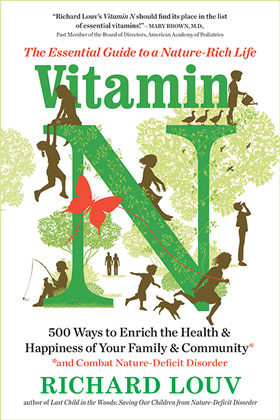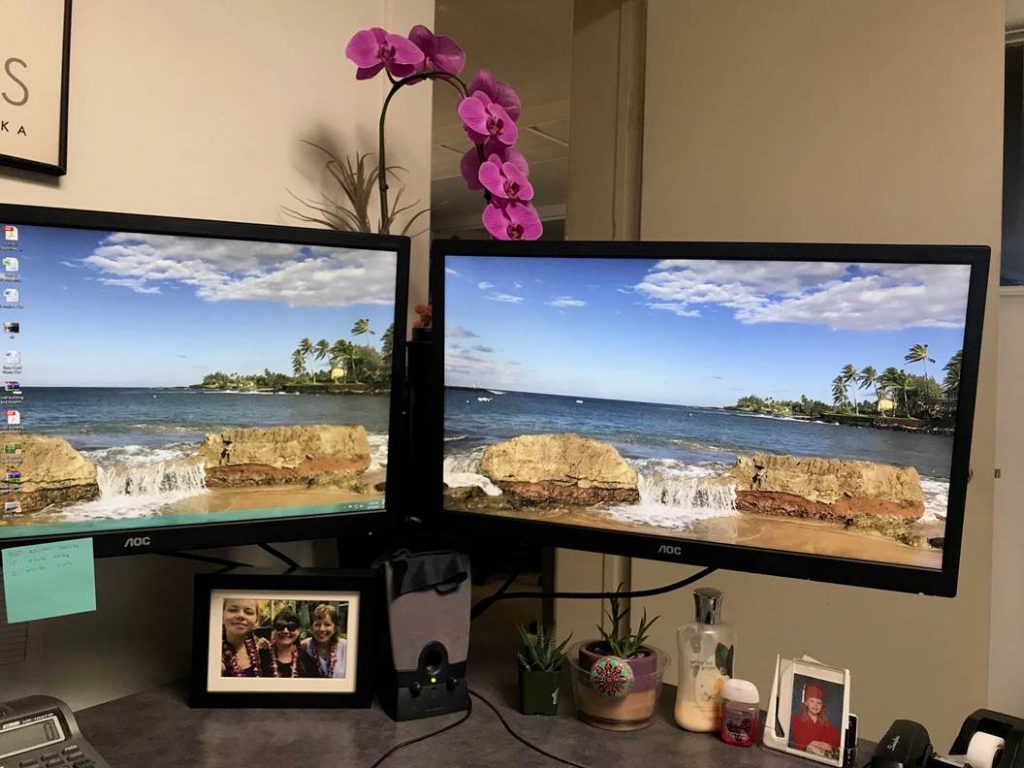Where is your phone right now? Chances are good you can reach for it. One in three of you is reading this blog post on a phone right now. According to a 2016 Nielsen Research report, we are now spending nearly 11 hours a day using our tablets, smartphones, personal computers, multimedia devices, video games, radios, DVDs, DVRs and TVs. It’s an hour higher than 2015.
We’re all told to put the devices down. You see how well that advice is going over!
I’m as guilty as any of you. In my profession, it worries me. The more time we are looking at our smartphones while eating lunch or binging on “Narcos” during a weekend is time we aren’t appreciating the natural world around us.

We enthusiastically recommend Richard Louv’s 2016 book to give you ideas about reconnecting with nature.
I’m not an expert on how media consumption affects us. But I AM an expert on how our relationship to nature affects us. Exposure to nature has a long list of health benefits, both physical and mental. My colleague Richard Louv calls Nature “Vitamin N.” We need nature in our lives. Once upon a time, we WERE nature.
Author Sue Thomas may have a solution for both issues. One day several years ago, she ran across an unfamiliar word: “biophilia.” She looked it up and learned about the work of Edward O. Wilson, who came up with this concept in 1984.
Thomas spent more time learning about biophilia and what a powerful force it is. This led her to the field of environmental psychology, and to another colleague of mine, Dr. Roger Ulrich. Dr. Ulrich’s research on the positive effects of nature got her attention. She realized his experiments usually involved photo or video images.
Sue Thomas made the connection between screen images of nature and biophilia, and came up with a new term for this phenomenon: Technobiophilia: “the innate attraction to life and lifelike processes as they appear in technology.”

Just looking at photos of nature like our popular Monkey Faced Orchids can give some of the positive benefits of being outdoors.
Even in San Diego where we’re outdoors nearly year-round, we connect with nature a great deal through our screens. We connect with nature digitally when we watch a video of animals, ocean waves, or flowers. No wonder our blog post here full of photos of unusual orchids is one of our all-time most popular.
This is also the reason we love to post photos of sunsets on Facebook and Instagram, and the same reason we “like” photos or videos of nature including those cute baby tigers on social media. When you choose a screensaver of a beautiful mountain or ocean scene, this is not random. This is technobiophilia. And it’s healthy!
It’s still important to interact with nature in the real world by taking walks on the beach, visiting neighborhood parks, and planting gardens. When we are indoors, we should include elements like plants, light, and natural surfaces into our workplaces and homes. But we need to add this third step: interacting with nature through our technological devices.

An ideal example of introducing Nature into your workspace. This is the desk of Good Earth Plant Company Office Manager Erin Lindley. She’s setting a perfect example of technobiophilia.
Good technobiophilic practices according to Sue Thomas include one or more of the following:
–They connect our lives in nature with our lives in the digital
–They contribute to our wellbeing via a tech/nature balance
–They support future biodiversity as technology and nature move closer together
What can you do today to move toward this? When you are stressed at work and need a break, look at a beautiful scene of nature. Subscribe to National Geographic or Nat Geo WILD, Nature on PBS, or the Discovery Channel on YouTube.
Our latest favorite is Nature Relaxation Films channel on YouTube. You can fly with a drone over the most beautiful places in the world like Fiji, Hawaii, New Zealand, or America’s national parks.
Since we can’t fight technology, we can instead figure out ways technology can bring us close to nature. Remember the “holodeck” in the Star Trek TV series and movies? Star Trek is getting closer to reality every day! As we develop virtual reality, you might be able to take a break at work someday to walk on the beach, without ever leaving the building.
Until then, enjoy learning about nature on your screen, put living plants on your desk, and get some fresh air whenever you can. If Good Earth Plant Company can help you get your dose of Vitamin N, give us a call!
